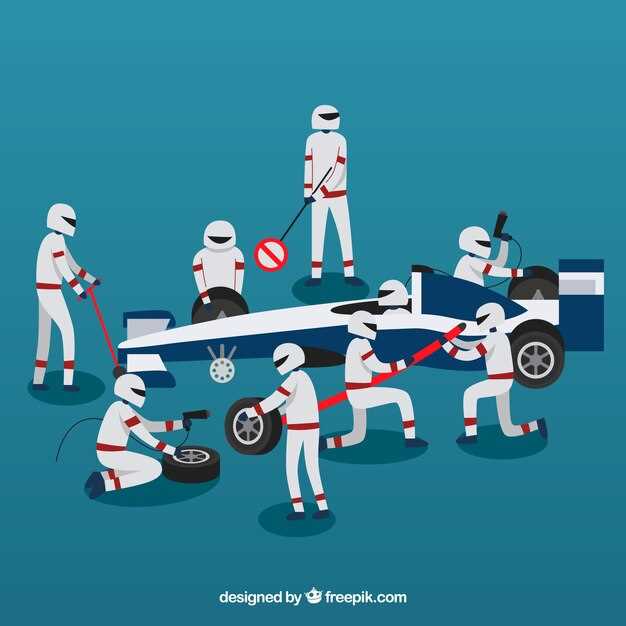
Race cars are high-performance machines designed to operate under extreme conditions. However, even the most advanced vehicles encounter issues that can compromise their performance on the track. Understanding these common failures is essential for any racing team aiming to maintain their vehicle’s competitive edge. From engine malfunctions to drivetrain failures, each problem poses its unique challenges and requires timely repairs.
One prevalent issue faced by race cars is overheating, which can lead to severe engine damage if not addressed promptly. This often occurs due to coolant system failures or inadequate airflow. Regular maintenance and monitoring of the cooling system can help prevent this problem, ensuring a car remains race-ready. Additionally, understanding the signs of overheating allows drivers to react quickly and make necessary adjustments during a race.
Another frequent failure is tire wear and blowouts, which can drastically affect lap times and safety. Factors such as tire compound choice, track conditions, and vehicle setup play crucial roles in tire longevity. Implementing a systematic approach to tire management and understanding the signs of wear can lead to effective repairs, including proper rotations and timely replacements during pit stops.
Finally, electrical failures can disrupt a race car’s performance, leading to issues with telemetry and control systems. Diagnosing electrical problems often requires specialized knowledge and equipment. By being proactive about electrical system maintenance and investing in quality components, teams can minimize the impact of these issues and ensure their vehicles maintain optimal functionality on the track.
Diagnosing Engine Performance Issues in Race Cars

Diagnosing engine performance issues in race cars requires a systematic approach to identify and rectify mechanical failures that may impact speed and reliability on the track. Common indicators of performance problems include reduced acceleration, erratic idling, and unexpected power loss. To effectively diagnose these issues, mechanics should begin with an exhaustive visual inspection of all engine components, including wiring, hoses, and connection points.
Next, utilizing diagnostic tools such as OBD-II scanners can help uncover error codes that provide insights into specific engine systems malfunctioning. These codes pinpoint areas needing attention, streamlining the repair process and minimizing downtime. Fuel delivery and air intake systems must also be tested to ensure optimal performance. Check for clogged fuel filters and malfunctioning injectors, which can stifle engine power and response.
Compression testing is another critical step in diagnosing performance issues. Low compression in individual cylinders indicates possible internal mechanical failures, such as worn piston rings or damaged valves. Addressing these may involve significant repairs, such as rebuilding or replacing engine components. Exhaust system blockages can also hinder engine performance, making it essential to assess the integrity of the exhaust manifold and catalytic converters.
Temperature monitoring is vital as overheating may lead to critical engine failures. Ensure coolant levels are adequate and that the radiator and water pump are functioning correctly. In addition, oil quality and levels should be checked regularly, as improper lubrication can cause severe mechanical damage over time.
Finally, conducting road tests can help validate repairs and inform any necessary adjustments. Observing how the vehicle responds under real racing conditions allows for a more comprehensive understanding of the engine’s performance and any lingering issues that might require further repairs.
Resolving Transmission Failures: Common Causes and Fixes

Transmission failures are a common issue in race cars, often resulting from various mechanical problems. Understanding these issues can help in executing effective repairs and ensuring optimal vehicle performance. One of the most prevalent causes of transmission failure is inadequate lubrication, which can lead to overheating and excessive wear on internal components. Regular checks and timely oil changes are essential to mitigate this risk.
Another common cause is worn or damaged gears. This may be due to aggressive driving styles or manufacturing defects. Replacing affected gears and ensuring the use of high-quality components can restore functionality. Additionally, slipping gears can indicate problems with the clutch or transmission bands. Adjusting the clutch or replacing bands can resolve this issue effectively.
Electrical failures can also impact automatic transmissions. Faulty sensors or electrical connections may disrupt shifting patterns, leading to erratic behavior. Conducting thorough diagnostics and repairing or replacing defective electronic components is crucial for restoring proper operation.
Finally, fluid leaks often signal serious underlying issues. Identifying the source of the leak, whether it be from seals or gaskets, is vital. Addressing these leaks promptly can prevent further mechanical damage. By understanding the common causes of transmission failures and implementing appropriate repair solutions, race car owners can maintain their vehicle’s performance and longevity.
Tackling Brake System Malfunctions to Ensure Track Safety
Brake system malfunctions are one of the most critical issues that can arise in race cars, posing significant risks to driver safety and overall track performance. Regular maintenance and prompt repairs are essential to preventing brake failures that could lead to severe accidents. Common issues include brake fade, fluid leaks, and worn-out components.
Brake fade occurs when the braking system overheats, leading to diminished stopping power. This can be addressed by using high-performance brake pads designed for racing environments that can withstand higher temperatures without losing effectiveness. Moreover, ensuring proper airflow to the brake components during races can help mitigate overheating.
Fluid leaks can severely compromise brake performance. Regular inspections of the brake lines and calipers are essential to identify any signs of wear or damage. Utilizing high-quality, mechanical seals and fittings during repairs can significantly reduce the likelihood of future leaks. Additionally, replacing old brake fluid with fresh fluid that meets racing specifications is crucial for maintaining consistent brake response.
Worn-out brake pads and rotors can lead to increased stopping distances and instability during hard braking. It is vital to routinely check the thickness of brake pads and the surface condition of rotors. Implementing a structured schedule of inspections will ensure that any necessary repairs or replacements are performed before hitting the track. Using performance-grade components not only enhances reliability but also improves overall race car handling.
In conclusion, addressing brake system malfunctions with a proactive approach centered on regular maintenance, high-quality repairs, and component upgrades will play a pivotal role in ensuring track safety. Drivers and teams must prioritize brake system integrity to maintain competitive performance while safeguarding against potential hazards.











